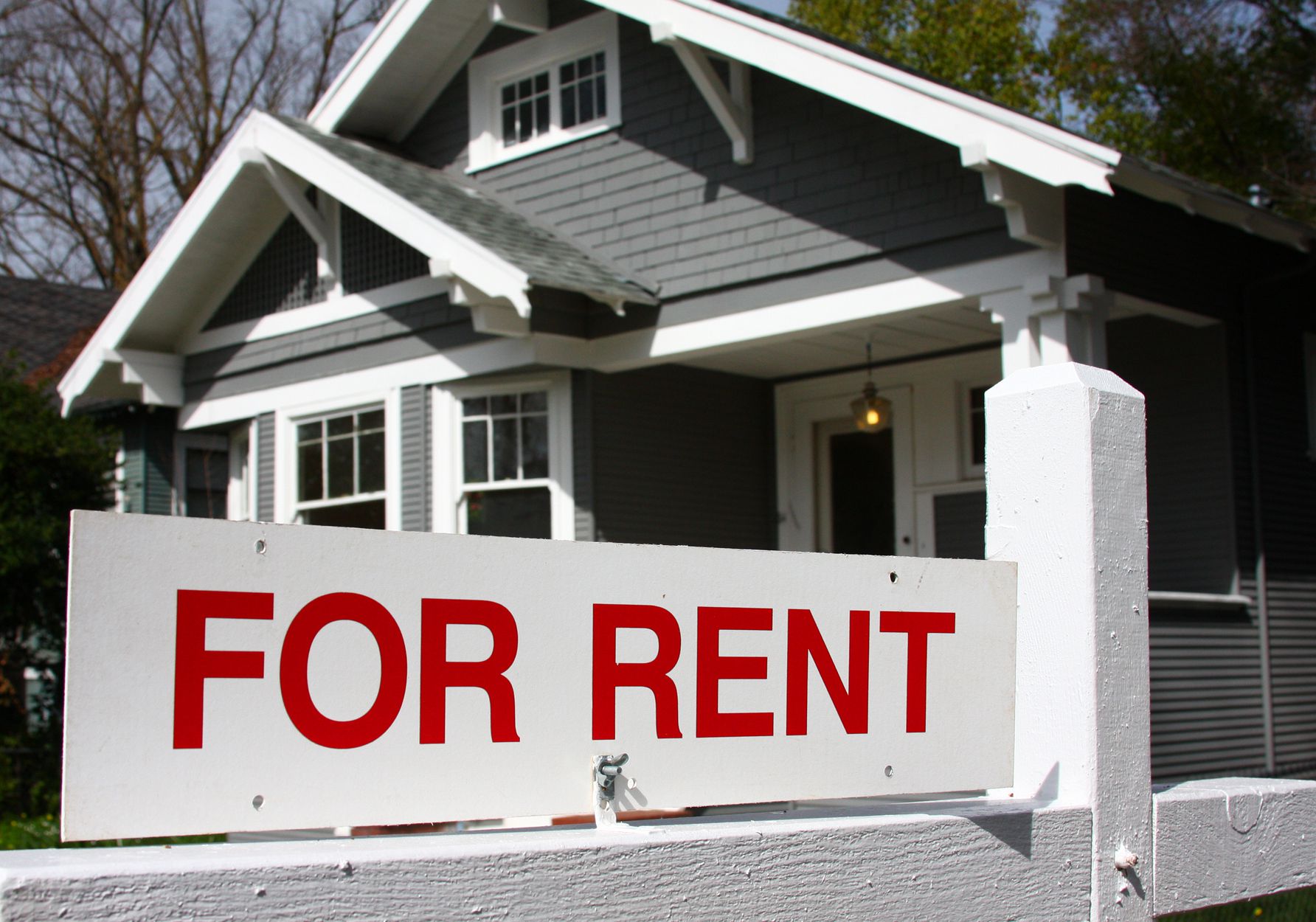There’s a Rental Crisis Coming. Here’s How to Avoid It.

The Covid-19 pandemic is wreaking havoc on the U.S. rental market. Approximately 9 million households have so far failed to pay their May rent, according to industry data. Last month, 1.4 million fewer households paid their rent compared with this time last year.
The country’s 44 million rental households are uniquely vulnerable amid the current public health and economic crises. Renters often lack financial security and legal protections, not to mention bargaining power vis-a-vis their landlords. Worse, many are now being hit by the worst economic downturn since the Great Depression. Low-income renters, especially, work in industries crippled by Covid-related job loss: retail, hospitality and leisure, restaurants, and construction. Data suggests that 16.5 million renter households have already lost income because of the economic shutdown.
Faced with the specter of massive housing loss, policymakers have taken some steps to keep tenants in their homes, not only to help the renters but also as a critical public health measure — after all, it’s hard to comply with a “stay at home” order if you don’t have a home, or to socially distance if you’re forced to move into tight quarters with family or friends. The CARES Act has temporarily protected many renters by providing billions of dollars for emergency housing assistance, significantly expanded unemployment benefits and halted some evictions through July. Dozens of states and cities have also temporarily halted evictions, and citiessuch as Los Angeles, Chicago and Philadelphia are providing emergency funding for tenants.
It appears these stopgaps are working, at least for now: We have not seen as severe a spike in nonpayment of rent as might otherwise be expected, and early rent payment figures from May look a bit more encouraging than April’s numbers.
But these remedies focus on the short term. Because of the scale of this downturn, many if not most unemployed renters will not have new jobs by the end of July. The federal government needs a long-term plan to prevent millions of unemployed renters from losing their homes when eviction moratoriums and unemployment sweeteners run out.
More shutdowns coming
Indeed, public health experts are predicting that the Covid-19 crisis will last well beyond the summer, and some government officials are bracing for waves of shutdowns that could continue for 12 to 18 months. It’s also likely that the U.S. will get hit with another, perhaps more deadly, wave of the virus next winter. When the economy does reopen, it will be in the throes of a deep recession during which millions of middle-income tenants will likely be unemployed and require housing assistance for the first time. Without smart, proactive policies to help millions of unemployed renters, we will be facing billions of dollars in rental debt, chaos at the eviction courts and overcrowded shelters primed for another outbreak.
Renters were struggling before the Covid-19 outbreak amid a well-documented affordable housing crunch. Nearly 40 percent of renter households are rent-burdened — meaning that they spend more than a third of their salary on rent — and two-thirds of renter households can’t afford an unexpected $400 expense.
On top of that, renters have few of the legal and financial protections offered to homeowners. Many states forbid renters from withholding rent even if their unit is in disrepair, most renters have no right to legal counsel during eviction proceedings, and once eviction judgments are handed down, renters can be evicted in a matter of days. And, partly as a result of the subprime mortgage crisis of 2008, federal housing policy heavily favors homeowners over renters. Congress spends approximately three times as much on mortgage-interest reduction as it spends on rental housing vouchers each year. Whereas mortgage holders are protected by the provisions of the Dodd-Frank Act, notably through creation of the Consumer Financial Protection Bureau, no analogue exists for renters.
For the moment, these renters are being kept afloat through a combination of short-term emergency cash, unemployment benefits and eviction bans. But it won’t last past the summer. On top of the one-time $1,200 stimulus check, the extra $600 per week added to unemployment insurance checks expires in July. Unemployment doesn’t cover everyone, notably our 10 million to 12 million taxpaying undocumented immigrants — many of whom are renters — and those working in the informal economy providing child care, cleaning and other services. Another 8 million to 12 million unemployed Americans haven’t even bothered to apply, due to a well-documented backlog of claims and the difficult application process.
It’s not clear what appetite Congress has for extending the current short-term stimulus measures. Lawmakers might choose to extend the $600 per week unemployment sweetener past July. An extra $2,400 per month is more than enough to cover rent for most Americans, and once unemployment offices dig out from the initial crush of claims, delivering this assistance would be an efficient and direct way to keep more people in their homes. Yet Republicans are concerned that these expanded benefits are discouraging people from returning to work, and any such proposal would have to survive tough negotiations.
Meanwhile, the $300 billion recently provided in the most recent stimulus package to keep small business workers on payroll is likely already gone. Temporary rental assistance remains underfunded by tens of billions of dollars, and need is only growing as layoffs continue.
Mom-and-pop landlords
While landlords should be encouraged to reduce payments or implement repayment plans, canceling rent isn’t a viable option for many of them. The prototypical rental unit might be inside a high-rise apartment building owned by a real estate giant, but in fact the overwhelming majority of rental properties in this country are single-unit homes owned by mom-and-pop landlords. These property owners rely on rent to pay their own mortgages, to finance repairs and upkeep of rental properties, and to pay property taxes.
So, protecting tens of millions of renters in the midst of a deep recession won’t be easy. But Congress needs to recognize the importance of keeping rent checks flowing. Delinquent rents could easily spiral into foreclosed units and a consolidation of rental stock similar to Wall Street buy-ups after the Great Recession. That means an increase in substandard housing, worse property management and more marginalized Americans. What’s more, evictions cost U.S. cities hundreds of million of dollars per year. That money should be helping to prop up a struggling economy instead.
But while difficult, it’s not impossible to prevent a rental-housing crisis. Congress needs to expand direct rental assistance. That means cash for rent, sent either directly to landlords or renters.
The National Low Income Housing Coalition estimates that $100 billion in rental assistance would support 15.5 million low-income households over the next year. The Urban Institute’s estimate is about twice that, and accounts for renters of all incomes. That line item’s a drop in the bucket compared to the total stimulus funding Congress anticipates pushing through this year, and will stabilize millions of Americans’ largest household expenditure.
Several mechanisms
There are several mechanisms Congress could chose for this. Cash could be directly provided for rent through the Department of Housing and Urban Development’s existing Emergency Solutions Grant network, in which local services providers administer funds to those at risk of homelessness, or through temporary expansion of the department’s Housing Choice Voucher program, through which local housing agencies pay landlords a portion of low-income tenants’ rent. While some housing agencies might face a flurry of new applications, most unemployed American renter households with zero income would easily qualify.
Alternatively, Congress could attempt to funnel money more directly to landlords. The benefit of this approach is that there are fewer landlords than tenants, and they’re easier to track down. The drawback is that this approach would involve creating an entirely new program. If Congress goes this route, it could model a program on the Treasury Department’s Home Affordable Modification Program (HAMP), focused on landlords’ non-owner occupied homes, or expand the Federal Reserve’s Main Street Lending program to allow lending to the rental industry.
The bottom line is that Congress needs to find a way to inject funding into the rental ecosystem — whether through unemployment insurance, rental assistance or direct payment to landlords. Protecting our renters won’t be cheap, and it won’t be easy. But ignoring the coming crisis will cost billions more down the line in the form of rental debt and landlord foreclosures, and could keep millions of Americans from safely sheltering in place. That’s something we truly can’t afford.
https://www.yahoo.com/news/rental-crisis-coming-avoid-163959843.html










Related Posts